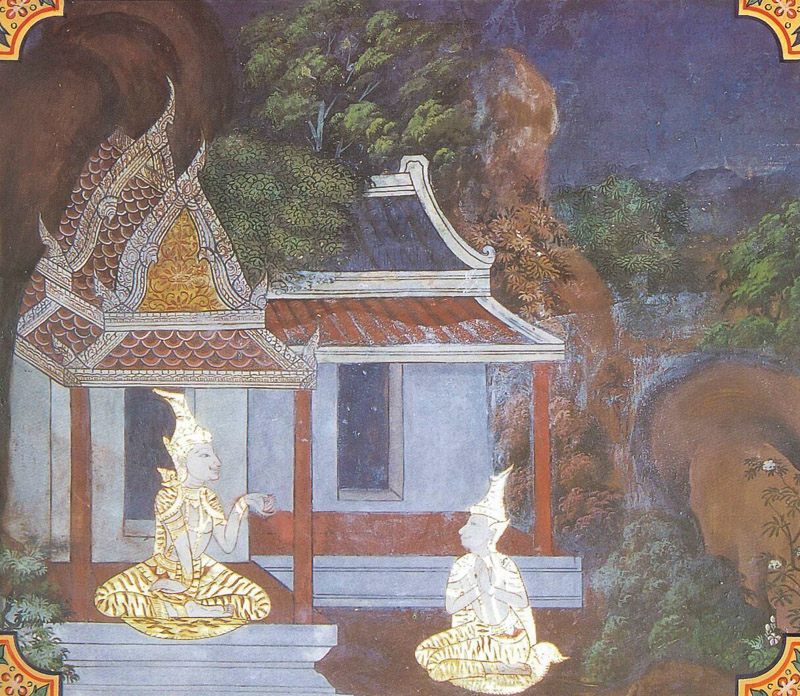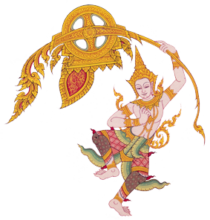
The Bodhisatta was once an ascetic. Before this, he was a wealthy brahmin, but after his wife died, he took his young son to live an austere religious life deep in the Himalayas. Many years later, some bandits from the border region raided a town to take plunder and slaves. One beautiful but wicked woman fled their attack, and during her journey she came upon the Bodhisatta’s hut. He was away gathering fruits, roots, and other foods, but his son was at home and the woman quickly charmed him into sleeping with her. Then she told him they should leave and live in civilization. He agreed to go with her, but needed to say goodbye to his father first. The woman knew that if she was still there when the Bodhisatta returned, he would beat her and drag her into the forest by her feet; so she left right away, giving the son directions how to get to her village. He became sad and lay down without doing his duties.
When the Bodhisatta returned, he saw the woman’s footprints and knew his son’s virtue had been lost. He asked his son why he was acting pitiful, and he answered that he had decided to give up the difficult forest life and return to the kingdom. Having come to the Himalayas as a child, he knew nothing of the world of men and he asked his father to teach him what life was like there. The Bodhisatta answered simply, “Avoid poison, precipices, mud, and snakes.” Not understanding, the son asked for an explanation. The Bodhisatta went on at length about each of these four worldly dangers—poison being wine, precipices being women, mud being honor and fame, and snakes being kings—and others as well. All this alarming advice changed the son’s mind, and he never did give up his ascetic life in the wilderness.
In the Lifetime of the Buddha
The wicked woman who tempted the Bodhisatta’s son was an earlier birth of a plump, lascivious young woman who had no suitors for marriage. Her mother decided to entice one of the Buddha’s disciples into falling for her. That morning, as she offered alms to the disciples walking past her house, the mother looked for one who could be tempted by a craving for good food. Eventually she saw a disciple who had not given up concern with his appearance: the corners of his eyes were anointed with oil, some hair hung down, his robes were of fine fabric and immaculately clean, and his bowl was colored like a precious gem. The mother knew she could corrupt him, so when he came to the door she took his bowl and invited him into the house to eat the best food she could provide. When he finished eating, she told him to come by again anytime. He took up her offer and they got to know each other well.
When she thought it was the right time, the mother took the next step in her plan by telling the disciple that theirs was a happy household, but she had no son or son-in-law to maintain it. The next time the disciple came, she had her daughter adorn herself and begin seducing him with womanly tricks and wiles—and it worked. He fell under her power and wanted to leave the sangha. The Buddha told him this story so he knew that this same woman had harmed him and tried to lure him away from a spiritual life in an earlier birth, when he was the young ascetic living in the Himalayas.
